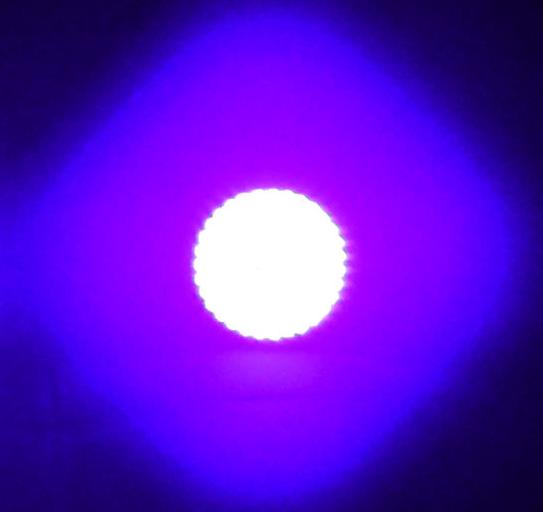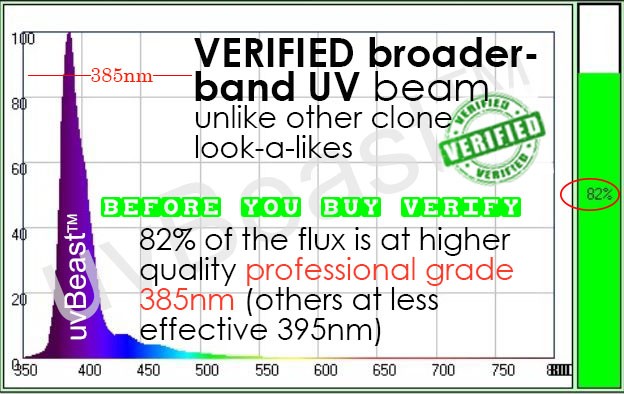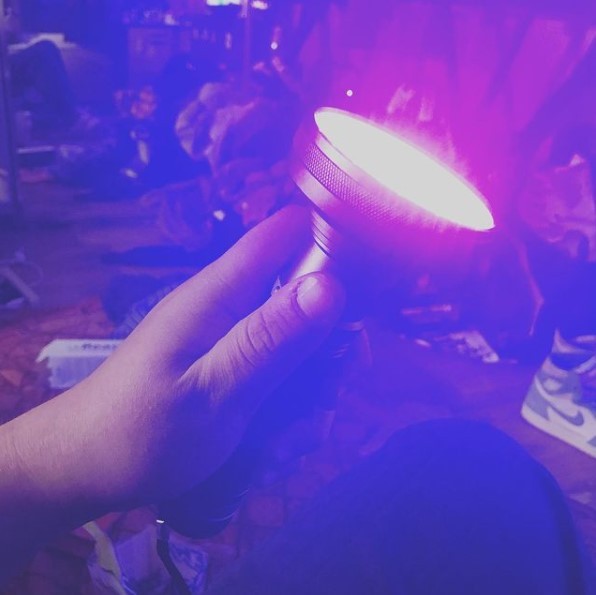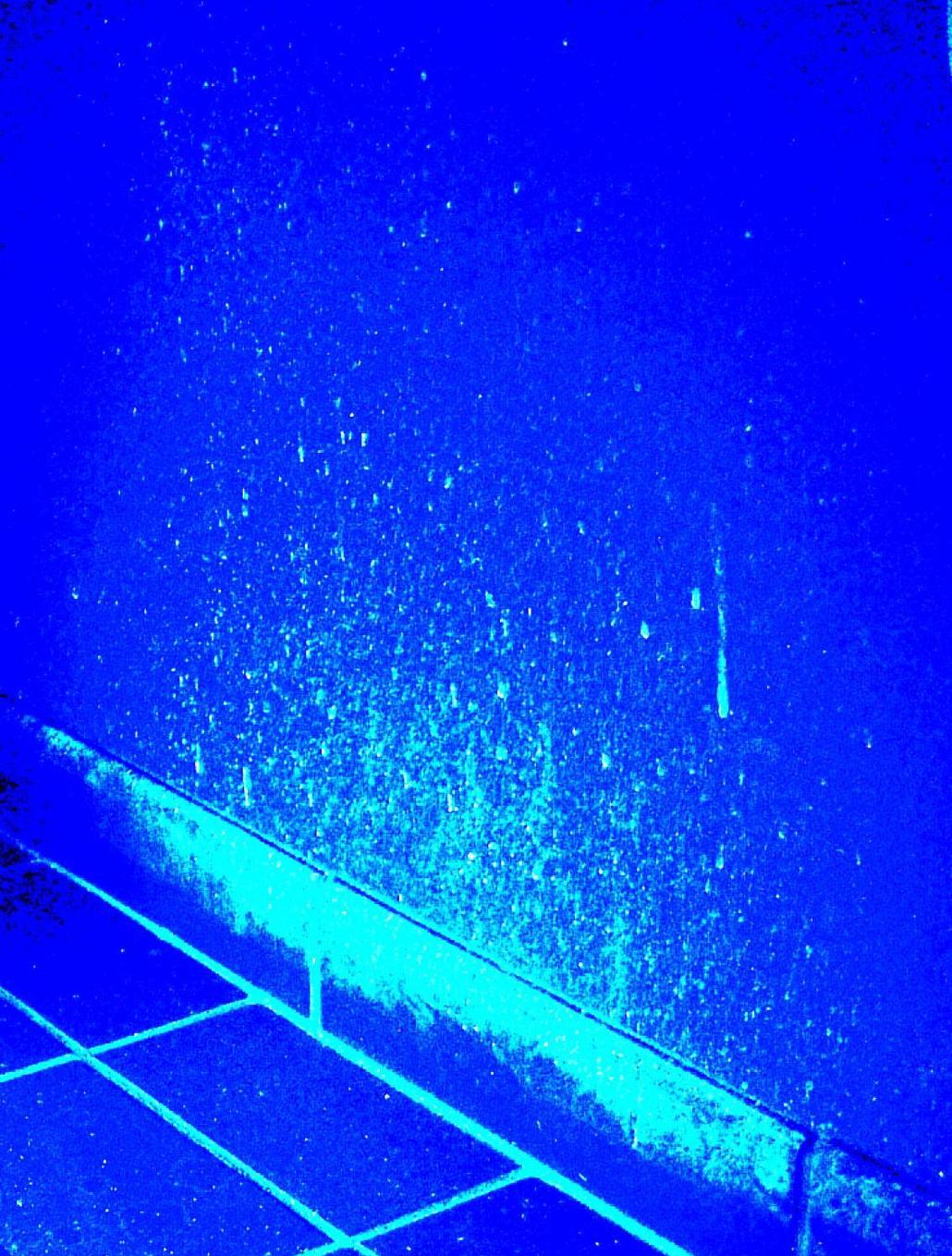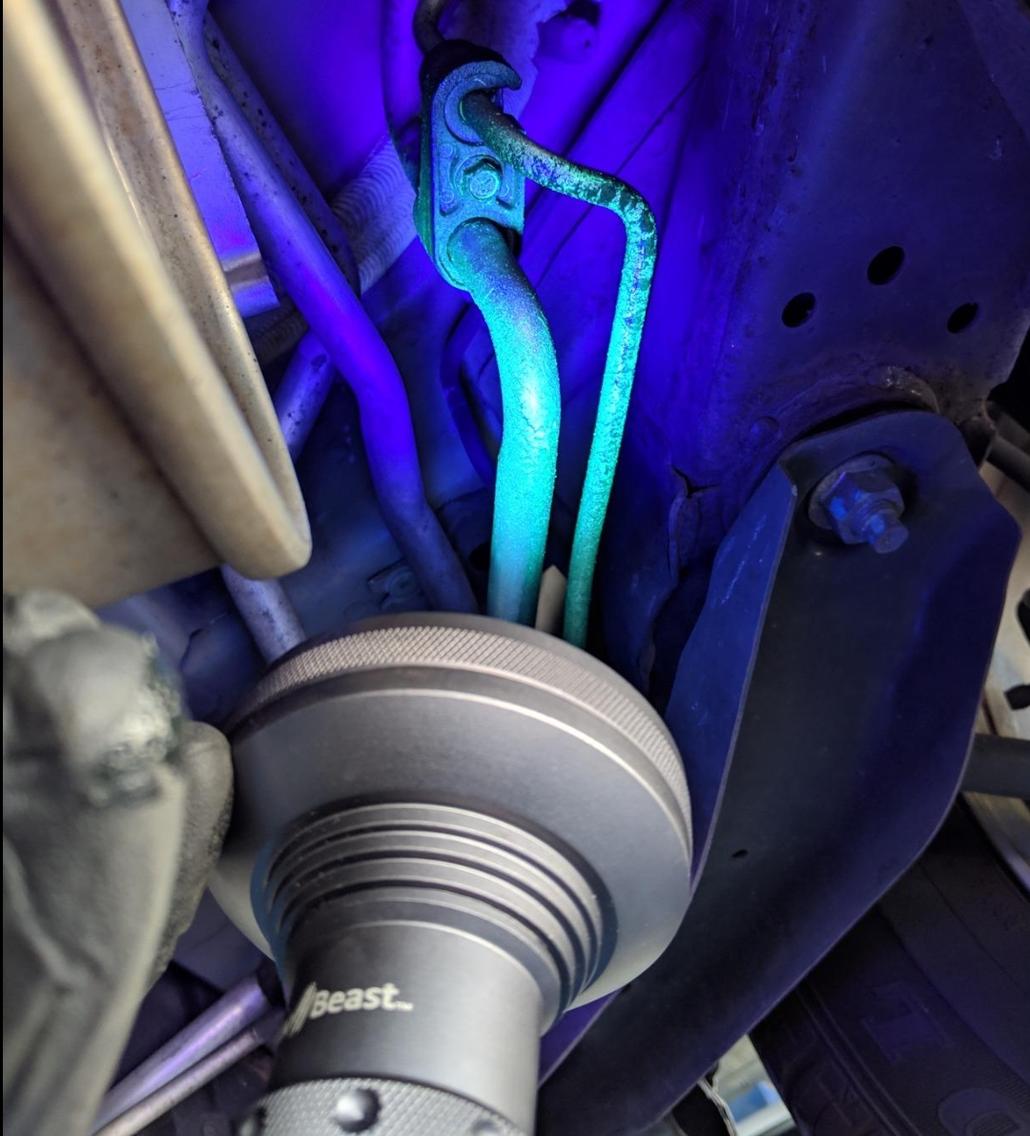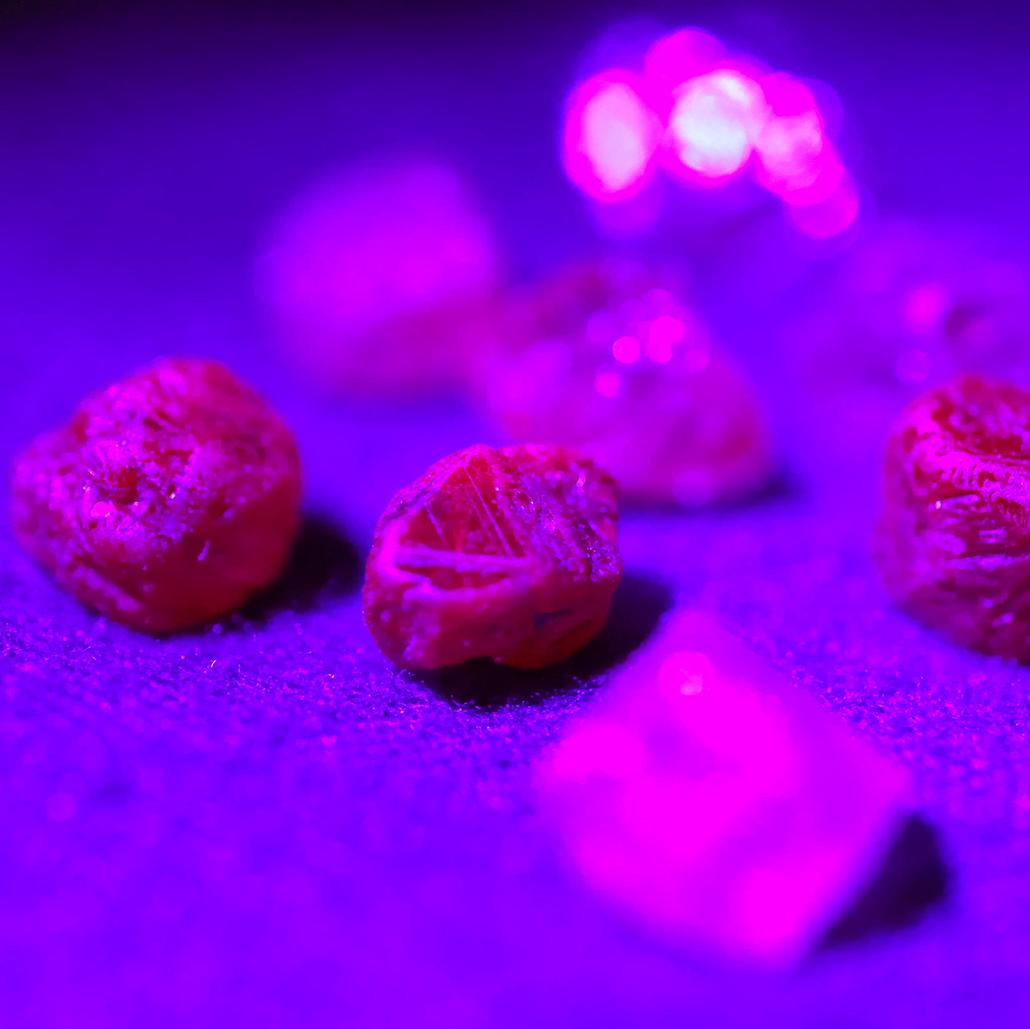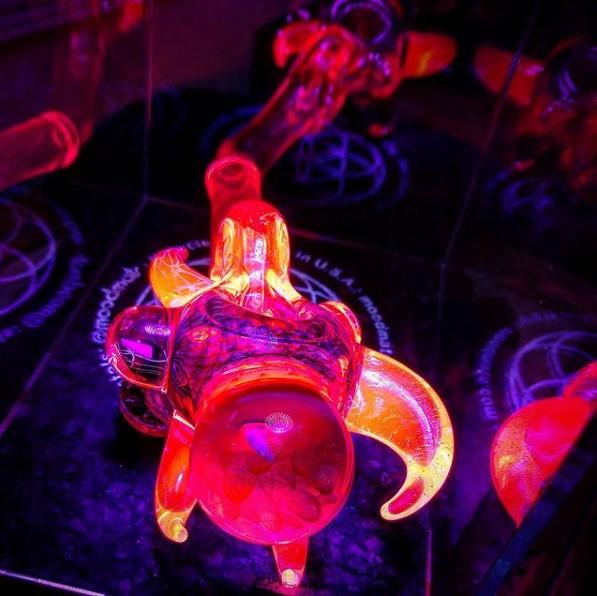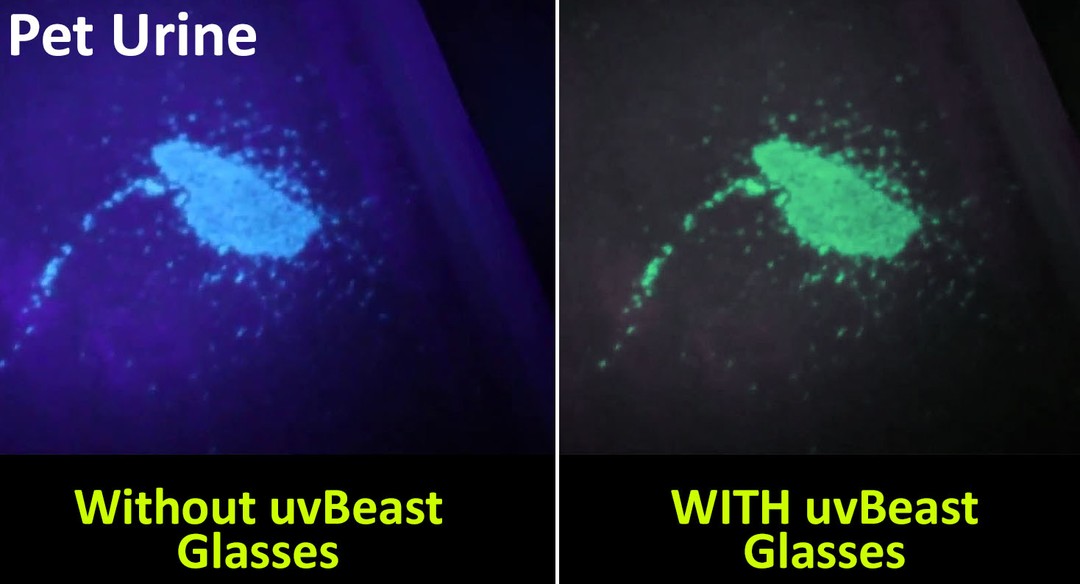"High power UV is our speciality". Ships from the USA. Fast and free. LIMITED STOCKS
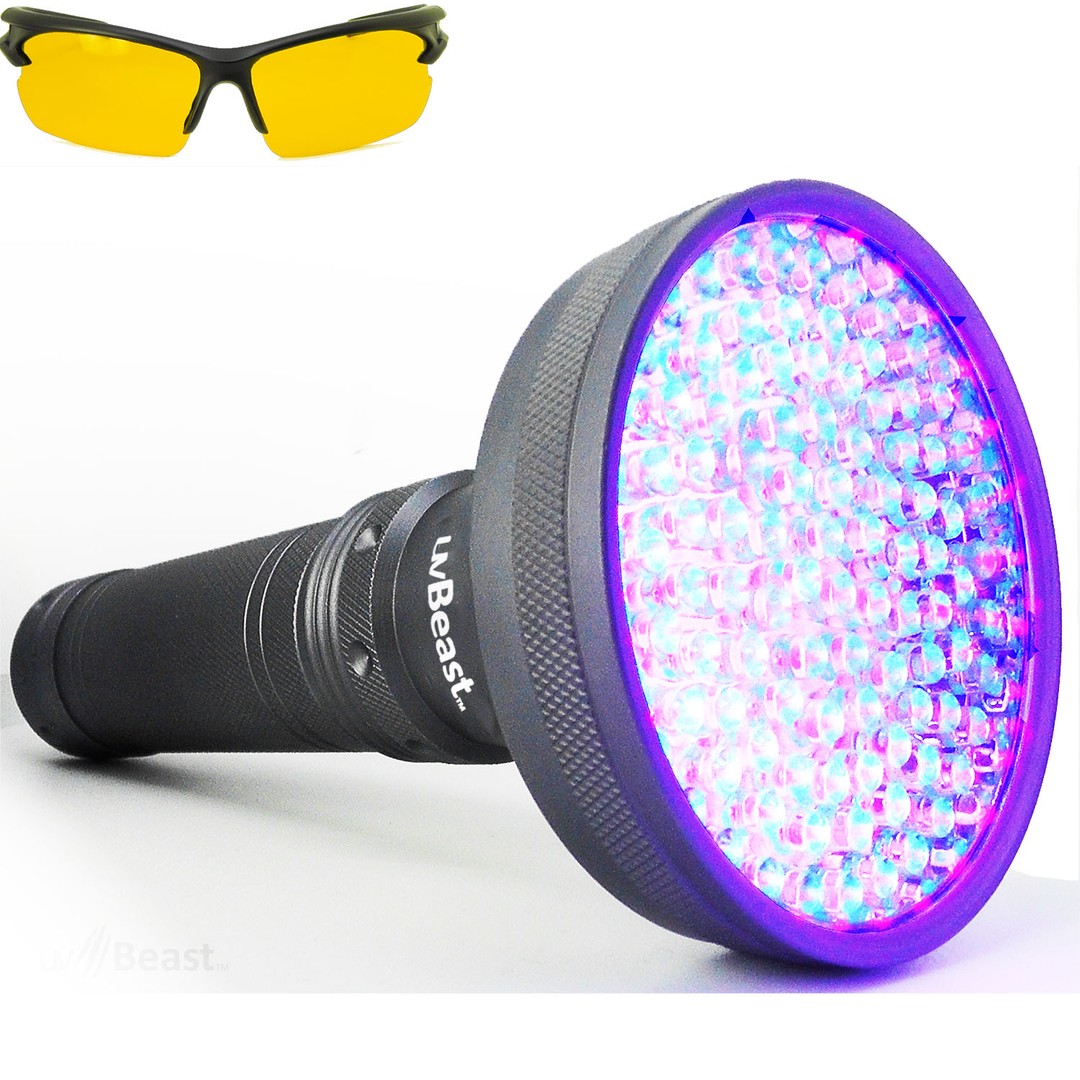
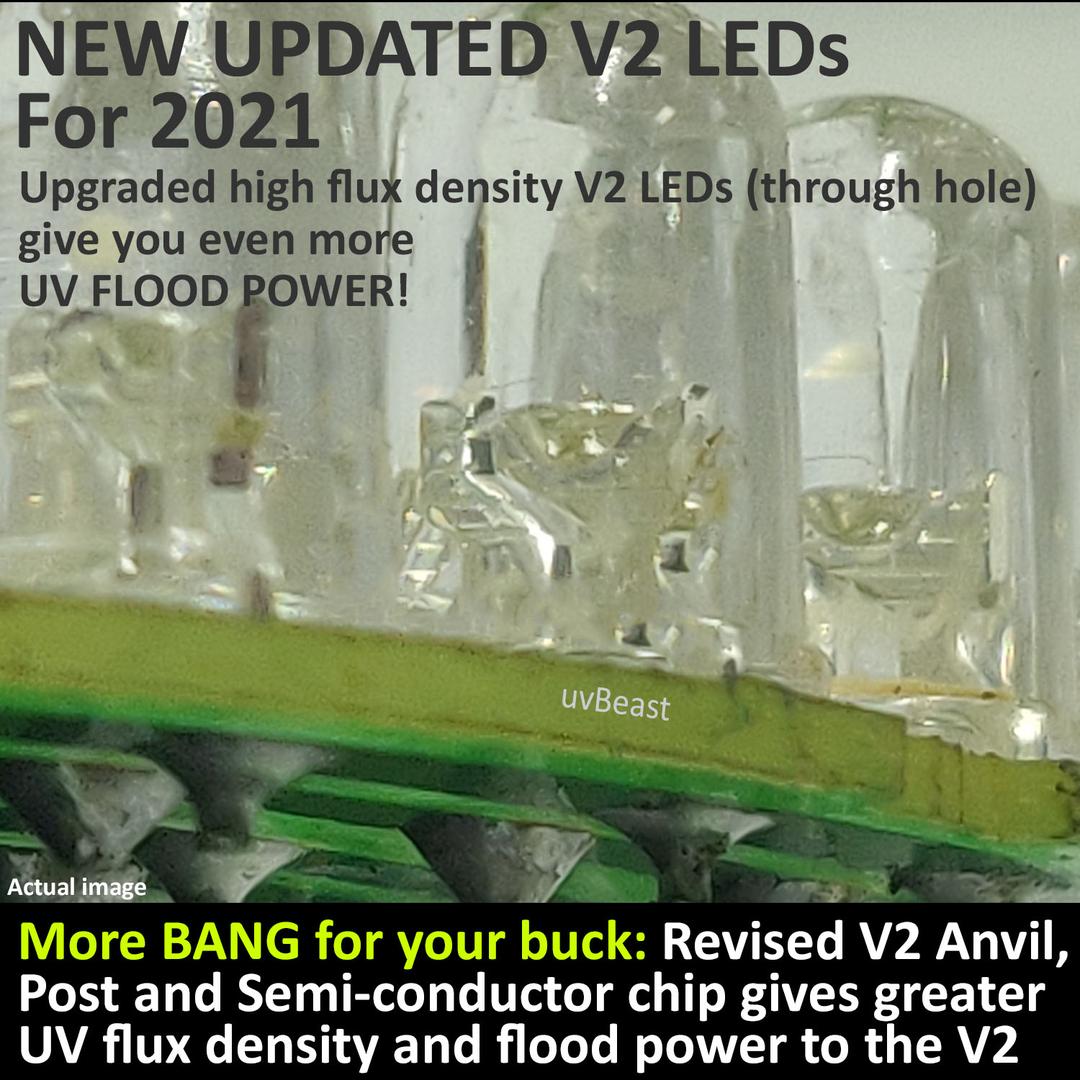
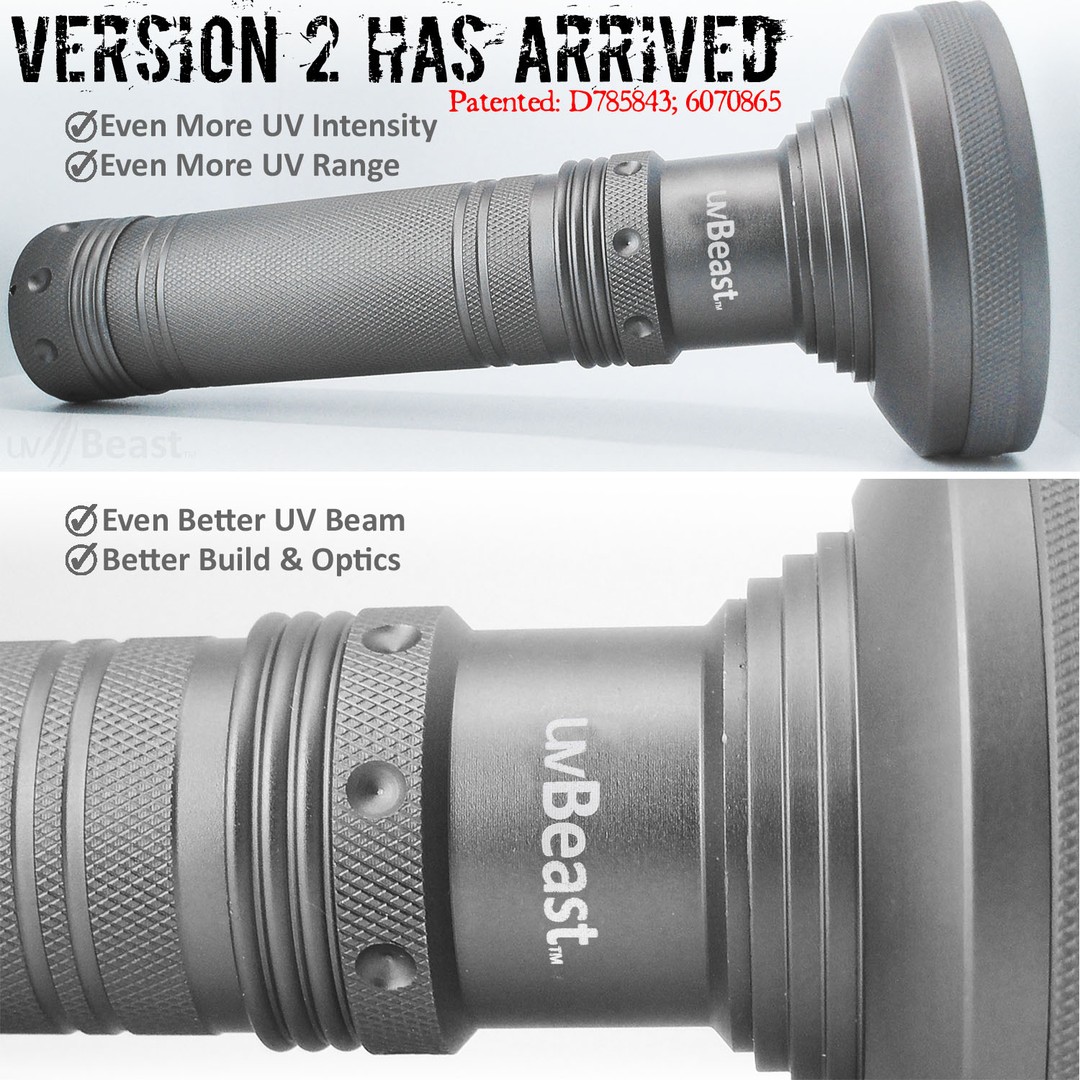

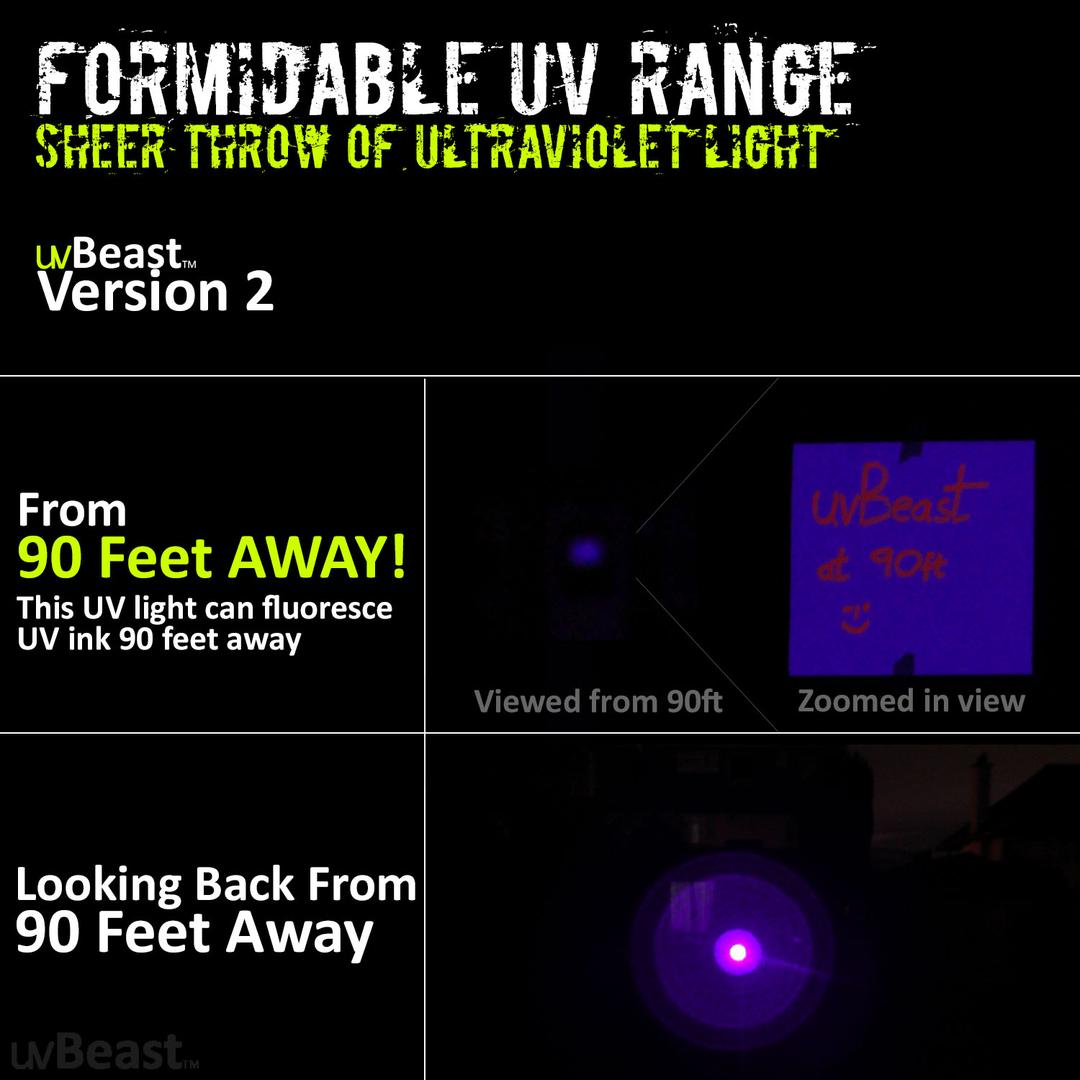
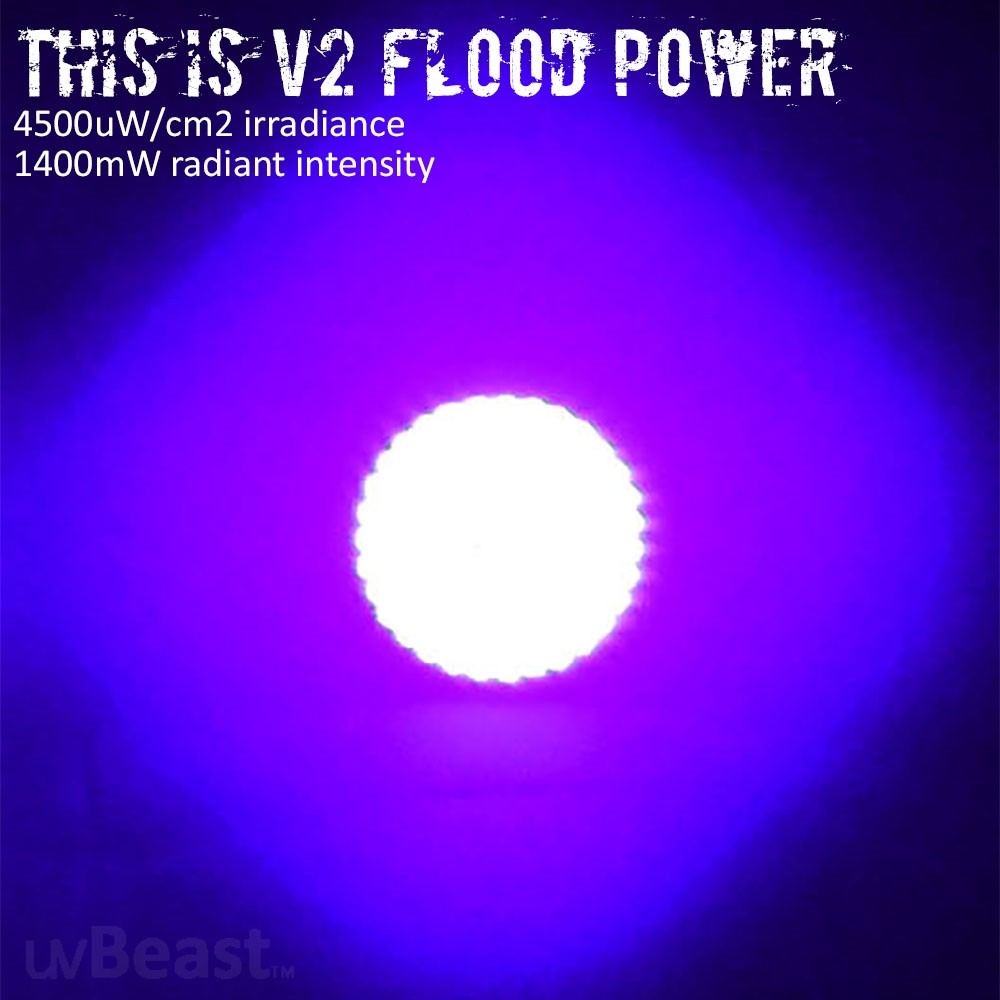
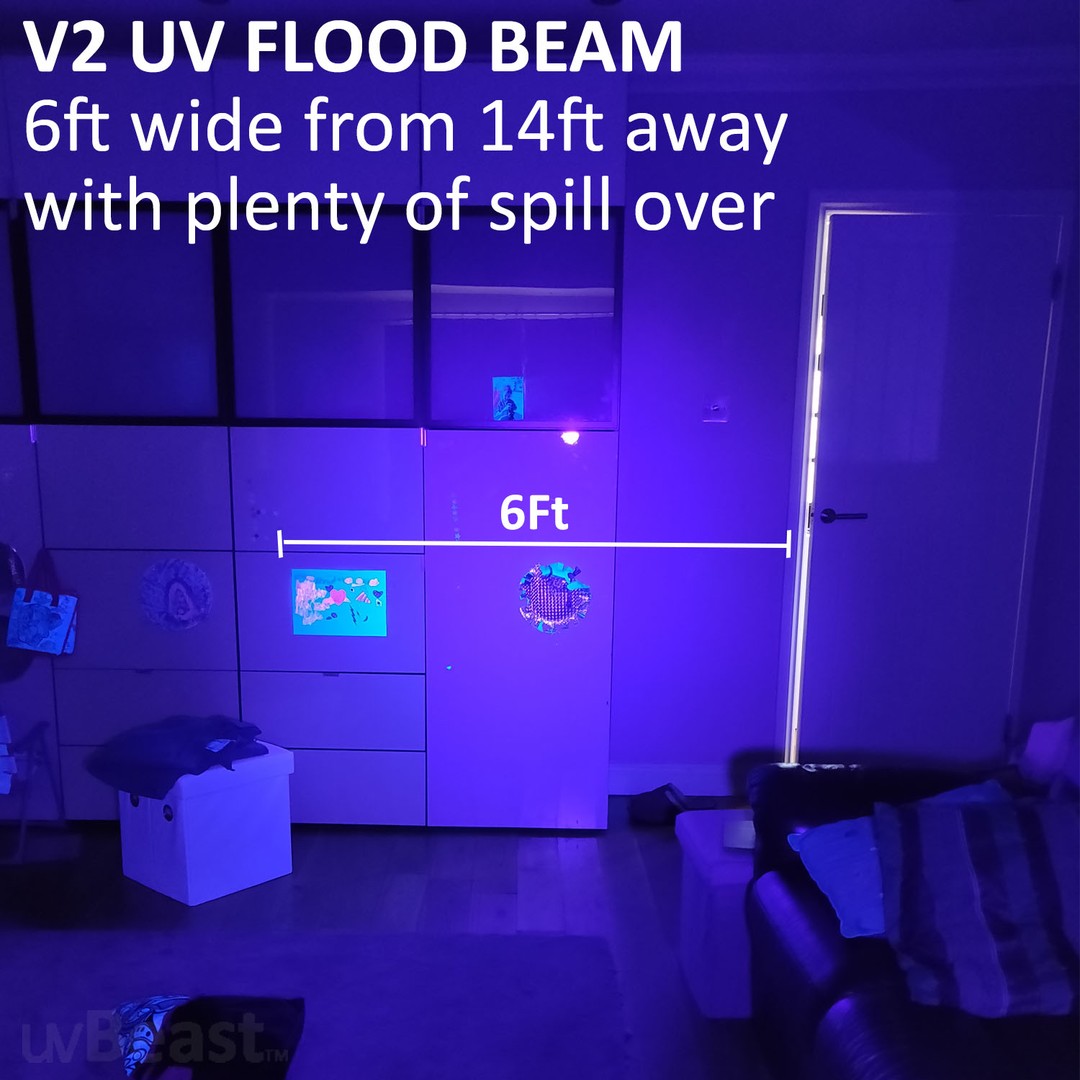

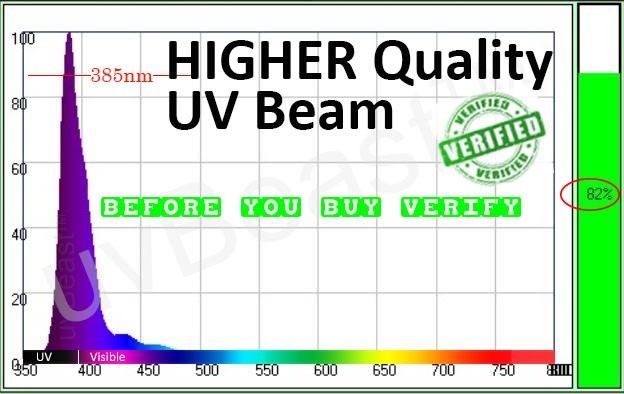
uvBeast V2 Black Light UV Flashlight Flood Effect - 385-395nm
BEST UV FLOOD UPGRADE
BEST UV FLOOD UPGRADE
"GODLIKE. If you want the best on the market for a reasonable price, this is the UV flashlight for you!!!" - Worm Z.
HIGH DEFINITION with Flood Effect 385-395nm UV - Best for Commercial/Domestic Use - Works Even in Ambient Light - Patented - Designed in UK
Editor's recommendation: "Although old is gold in with the V1, this has enhanced optics, upgraded semi-conductor LED chips, & comes with customized light transmission eye wear, for better performance. It's for the more serious user who seeks to go beyond the leading edge standards of UV intensity. The V2 is the perfect blend between a UV floodlight beam that can also reach into the distance! DO NOT look at this light. I did and got seriously dazzled!"
100% Money Back Guarantee
"GODLIKE. If you want the best on the market for a reasonable price, this is the UV flashlight for you!!!" - Worm Z.
HIGH DEFINITION with Flood Effect 385-395nm UV - Best for Commercial/Domestic Use - Works Even in Ambient Light - Patented - Designed in UK
Editor's recommendation: "Although old is gold in with the V1, this has enhanced optics, upgraded semi-conductor LED chips, & comes with customized light transmission eye wear, for better performance. It's for the more serious user who seeks to go beyond the leading edge standards of UV intensity. The V2 is the perfect blend between a UV floodlight beam that can also reach into the distance! DO NOT look at this light. I did and got seriously dazzled!"
What are people saying about the V2?
★ ★ ★ ★ ★
“Have used various black lights for 30 years now and this is the best one yet. By far! Very powerful, compact, lightweight. WORKS EVEN IN DAYLIGHT”
—Michael Veatch, USA
★ ★ ★ ★ ★
“Bought two. Live in Phoenix AZ. Found 40 scorpions in my back yard this vet two weekends. Much better light than the small ones you can get at the big box stores. Thank you.”
—Geoffrey C. Koelling, USA
★ ★ ★ ★ ★
"Must-have tool. I must admit I bought this impulsively. But i am so glad I did! My wife is very OCD and prides herself on how clean she keeps the house. I invited her to join me and see just how clean everything really is. After about 20 minutes of walking around the house listening to her gag and scream "OMG" she hasn't stopped cleaning. And apparently my cleaning does not meet the new standards so she has assumed all cleaning duties...not that I'm complaining...”
—alexdavis97, USA
★ ★ ★ ★ ★
“I bought this to UV cure an adhesive, this thing is amazing. Super intense, cures the adhesive almost instantly! :)”
—Todd, USA
★ ★ ★ ★ ★
"I bought this to find caterpillars on the garden...not to destroy them but to study what I found. It does work! It was recommended by a local horticulturist, insect lover and author, Jessica Walliser. The light is very strong and it’s interesting to see the garden at night illuminated by UV light. It’s also slightly depressing to go through the house with it and see all the spots on the walls that obviously need cleaning. I’m especially impressed by the company.”
—Patti, USA
★ ★ ★ ★ ★
“I bought this to look for pet stains in the carpet. HOLY COW! This thing will light up a whole room by shining it on white synthetic draperies. I also found many stains in the carpet. If you're faint of heart, don't shine it around your toilet. It will show where cleaning is necessary. One reason I picked this model is because it used 6 batteries for more power. Can't wait to get to AZ and hunt for Scorpions!”
—Linda C. Anderson, USA
★ ★ ★ ★ ★
"I can't tell you how Badass this thing is if you deal with Scorpions... There is NO competition and I've been doing this for 21 years... I HIGHLY RECOMMEND this light....”
—Todd D., USA
★ ★ ★ ★ ★
“I own a carpet cleaning business and use these daily. I have 3 now and all do a great job. I've tried at least 6 brands over the years and this one is the brightest I've ever used..”
—Gregory P., USA
UPDATED LEDs
The V2 has been upgraded. It was market-beating on its debut release but now it's blazing! We've upgraded you to V2 Through Hole LEDs. Our R&D people are not asleep and we're always upgrading at the uvBeast Labs. It's the hallmark of an established and innovative manufacturer. Others can imitate us but we prefer to innovate to keep you ahead. High flux density for more V2 UV FLOOD POWER and bang for your buck!
WHY uvBEAST V2?
The most powerful and best regarded UV flashlight in its class just got more powerful! Everything you loved about the V1 but more! More power, more range, better build and an upgraded UV beam makes this an even better investment. PRO TIP: Anyone can claim superior UV, but ask them to prove it. We can and have. If it doesn’t have our name it’s not the same.
V2 FLOOD EFFECT
Remember the difference between regular TV and wide screen? You’ll see a whole lot more at once. A wider angle of UV floodlight will do your job that much better. Don’t just take our word for it, everybody says so.
MORE UV THROW
UV range makes a big difference. Do you want your UV to go a few feet ahead or tens and tens of feet ahead? Well with V2 we tested UV dye out at 90 feet, successfully! We think it can do more.
PRO-GRADE UV
uvBeast V2 has upgraded high definition UV as compared to other market examples, making this the UV flashlight you wished you always had. It really does leave others for dust. No brag. It is what it is. We were asked by well-known government agencies to enhance the original uvBeast. So we did. And it’s now available to you.
- Battery (not incl.): x6 AA size required (1.5v Alkaline)
- Finish: Anodized Anthracite Grey
- Material: Aerospace Grade Aluminium
- Special Features: 385-395nm UV high radiant intensity; Flood-effect beam
- Average Battery Life: 8 hours
The Problem With Other UV Flashlights
For most of us, they’re just too damn dim! They’re impractical. You’ll need total darkness, be within 2 feet, and literally on top of, your area of interest. You’ll mostly be on your hands-n-knees, in the dark!
The Most Powerful And Best Regarded UV Flashlight In Its Class Just Got Even More Powerful!
Since release of the V1 uvBeast demand grew so strong and feedback so positive that people asked for more! Since then many copycats, look-a-likes, and cheaper clones appeared so we got to work, again.
What's in V2?
It’s been inspired by working with some of the top government agencies who used the uvBeast V1. Simply put, it has more power, more intensity, more range, and a better quality UV flood beam (385-395nm with more useable UV).
Now Higher Definition UV
With larger LED semi-conductor chips and better optics, you now have an even higher definition UV flood that you won’t find in other models. You’ll get more useable UV light for your money and better results. So much so, that we’ve had to include a custom tint formula spectrum transmission UV glasses to prevent any eye fatigue that comes with this kind of UV power! It really isn’t a marketing gimmick.
Proven and Tested
We’ve already rolled this out to an early group of professionals and enthusiasts who are hard to please! We got a strong thumbs up, which means that you won’t be making a blind investment and getting something that turns out to be a dud.
Claim to Fame?
Producing a mega power and high intensity UV beam isn’t easy. Especially a flood beam, unbeatable throw range, and a quality beam in the UV spectrum, into one flashlight! It’s big league and commercial class. Ever since our focus began on a better level and brand of UV flashlight with the uvBeast V1, many now claim the same. Fair enough. As long as those claims are valid. Anyone can draw up a nice chart and write down impressive specifications. We get that. So instead, WE SHOW YOU what the uvBeast V2 is capable of.
Take a look and you decide if it’s time to upgrade into a professional higher class of ultraviolet light.
See In Even Higher Definition
Our color tint formula optimized for wavelength blocking and transmission with the uvBeast UV flashlight. Glasses INCLUDED with the uvBeast V2
Professionals use our UV lights. If it's good enough for them, it'll be great for you.
It'll bring seismic improvements in the way you'll use UV.
Are you disappointed with or worried about inferior (UV) results? uvBeast UV flashlights are solely designed with that inferiority taken right out. Higher power UV will give you results that will astonish you.
We only do higher intensity powerful UV. Because it's the biggest single thing that will make all the difference to you.
Tell me more.
-
What UV wavelength is this?
This is ultraviolet light emitted in the 385-395nm (nanometer) band. Note that visible light can start at 395nm+ which is the "violet" region - the first region in the rainbow. Below this is the "ultra" violet region which the human eye cannot see.
So, coming back to what we just said - this light emits UV in the 385-395nm wavelength range. This means that the maximum density of the flux (or the majority of the UV emitted) is between this band. This is good news! 395nm+ is visible light - which you don't need. Many UV flashlights in the market are 395, 400, 405, 410 and often can be marketed as "395nm" UV lights but in reality emit a substantial amount of 400nm+ UV, which will stray too much into the visible light region - visible light won't fluoresce items, which means not much is going is going to show up! Purple party lights are often characterized by this, and you don't want to have these in your UV flashlight. They will not cause the necessary or sufficient excitation required for objects to fluoresce.
Another point of note is that often a narrow band such as 390-395nm or 395-400nm is not ideal to fluoresce many items of interest which you may require. Some things will show up under that type of UV while others won't. This explains why you'll often hear users say, "This light shows things up that my other lights don't." The reason is because under a broader band you'll see a greater variety of items of interest fluoresce.
-
What's the difference between your 385-395nm and your 365nm UV wavelength flashlights?
Some of our models emit at 385-395nm UV wavelength range, and others emit at 365nm. "nm" stands or nanometer as a measure of wavelength on the electromagnetic spectrum. 395nm+ (greater than 395nm is the visible light region, then moving into infrared).
It's not necessarily the case of which is better, but more about which one suits your needs and requirements the best. If you're new to UV a 365nm model will have you surprised as the emitted light will appear DIM to the eyes, but excitation of objects is high and so fluorescence is correspondingly high. The 385-395nm models will emit more visible light relative to the 365nm model which can sometimes be useful for navigational purposes.
Different items will show up under the different wavelengths. As a rough guide, the 385-395nm devices are more than adequate for scorpions, finding fluid leaks, fossil hunting (including bones), urine identification, various minerals, charging of photo phosphorescent substances (i.e. glow-in-the-dark items), vaseline glass, flora and fauna, and similar. Under 365nm UV you get to see all of the above (with much better contrast as there's minimal visible light interference), plus more items will show up. 365nm will fluoresce a wider variety of minerals and also in different visible colors, stains will pop out, UV security features will stand out (as they're designed for 365nm UV), curing will be better, and for those who prefer uncontaminated UV at a wavelength where the widest variety of objects will fluoresce, then 365nm is the best choice. But again, pay attention to your requirements as in many cases 385-395nm from our V1 device is perfectly adequate for many applications.
In a nutshell. The 385-395nm have relatively more visible light and are suitable for many applications including the common ones, plus more. The 365nm devices are a great at all tasks requiring UV and will go beyond into giving you more precise and great contrasting results. Many folks often prefer to have both types to hand as we've found from purchasing habits on our store.
-
What are the distinguishing features of the V2?
When we first introduced our V1 model to the market (back in 2015), it was a new design and approach which brought formidable hand-held UV intensity at the disposal of the user. As you can imagine others tried to copy, clone, and imitate. But we don't stand still and we're not a one-trick-pony type of outfit. We don't want to imitate. That's not who we are. Instead, we want to innovate. So with our ears to the ground, listening intently to user requirements, we developed the V2 which is the next step up from the V1. And to outsmart the copycatters further we did a couple of more things: We upgraded our V1 LEDs to be in line with the year 2021, AND we also upgraded the V2 LEDs from what they were when we first launched the V2. Either we moaned and complained and got stuck there, or we put our on our thinking caps to outsmart those riding on our coat tails. We chose the latter!
(1) Possibly unlike other vendors, we are continuously upgrading all of our models as and when we identify opportunities to do so. So with the V2, we have upgraded the UV LEDs with 2021 better output through-hole V2 LEDs. These V2 LEDs have a revised and upgraded post, anvil, and semi-conductor chip - which are the tiny components in the LED capsule. These revisions ensure that we're giving you the maximum V2 flux density of ultra violet for your buck. In plain English, that's more useable UV at the right wavelength, straight out of the business end. We don't want you using older year 2014 LEDs when newer updated LED chips are available.
(2) You're getting broader band UV. Typically the bands commonly seen are the less expensive 390-395nm or 395-400nm UV wavelength band - 5nm band. The problem with a narrow band is that not everything you might want to see shows up under the UV. This explains why some UV flashlights are great for easy-to-spot things like scorpions, but when it comes to the more elusive things like stains, urine, or imperfections you want to see, they don't show up. You have to switch to a different UV flashlight for those tasks. But with a broad band of 385-395nm - 10nm band - a whole lot more shows up because some items will only fluoresce with UV under 390nm. You have likely heard of people excited with their new UV flashlight they just got from the store, which works great for their glow paints and sneakers, but doesn't show up the finer things like stains.
(3) We think you'll be hard pushed to find a more intense UV flashlight at these prices. Along with the necessary top-notch quality of the UV beam, both of which need to be present to result in a great performing UV flashlight. Producing a high intensity UV beam isn't trivial. Yes, you'll come across many examples. But trust us, there is more to it than meets the eye. You'll not only need to confident with the intensity of the UV beam, but also the quality of the UV emitted by the LEDs.
-
What are the glasses for?
The purpose of the UV glasses provided with some models is primarily for enhanced and amplified viewing of fluorescence (i.e. the items of interest that you want to see). This is particularly effective when (1) traces of fluorescence and/or excitation effects are weak and hard to otherwise spot, and (2) when conditions in the environment present high color “noise”. In addition, our glasses will sharpen and clarify the viewed surroundings and will show any reaction to the UV light i.e. fluorescence, with sharper contrast.
The secondary purpose is to reduce glare and discomfort (by the 385-395nm wavelength range) the user may experience when using the uvBeast especially during prolonged periods. The purple visible wavelength from the uvBeast 385-395nm models can sometimes be slightly overwhelming when against certain backgrounds and substrates.
These glasses were primarily designed to filter out interfering visible wavelengths from the beam of some models of the uvBeast which are in the longer wavelengths (above 365nm). This spectral distribution is a normal characteristic of LED technology as opposed to laser diode technology, and visible light from the uvBeast only comprises a small amount of flux relative to the entire spectral output.
The color tint of the glasses are of a special formula adjusted to the uvBeast’s spectral emission and distribution flux, where transmission of the appropriate and wanted wavelengths are either granted or denied transmission.(For further information please “Is UV harmful to my eyes” in this FAQ section).
-
Is this UV flashlight harmful?
UV from the uvBeast is not dangerous to the eye. Please refer to the FDA's 21 CFR 1040 - PERFORMANCE STANDARDS FOR LIGHT-EMITTING PRODUCTS paper.
The FDA classifies "harmful" light emitters being laser emitters, sunlamps (for tanning), UV mercury vapor lamps, and medical UV devices.
And this is scientifically correct since the dangerous types of UV are:
1. UV-B and UV-C which are below 315nm which is also known as shortwave UV in the actinic region. Sunlight does contain UV-B which is why you'll see "dangers of sun exposure articles", whilst the Earth's atmosphere filters out UV-C from the Sun - good thing as it has DNA altering characteristics which is why it is used as a germicide
2. Sunlamps that are VERY high intensity which are designed for darkening the skin via exposure for several hours.
All current uvBeast models emit UV-A (above 315nm wavelength) which is not harmful to the eyes nor skin, and moreover the intensity is not that of sunlamps. Moreover the UV emission is at a wavelength of 365nm, or 385-395nm which is well above the dangerous "315nm and below" UVC region.
However, it is not advisable to look directly at the uvBeast since it will cause discomfort similar to looking at any intense light. The UV glasses which are provided with some of our models will assist in reducing the glare effects and any discomfort that some users may experience.
-
What are the uses of this UV flashlight?
You may be surprised to know that a comprehensive answer to this question is difficult. There are the common uses most people know, the not-so-common, and even the ones we ourselves are learning about from users.
For most, deploying UV is a game changer.
Here's a list for quick reference.
Whether your needs are commercial or domestic uvBeast will not disappoint. Among other applications that require UV light, uvBeast is especially designed (but not limited to) to fluoresce the following:
- Cat/Dog urine (Note: urine needs to be dry - as wet/fresh urine doesn’t fluoresce under UV, but a wet urine stain is easily spotted by the eye anyhow)
- Scorpions and their dens (but the very young, and adults just molted may not glow as much)
- Rat/Mouse urine trails (appear as small dots since they urinate and defecate as they travel and eat – weird I know, glad humans aren't like that. But then again..)
- Human Body Fluids (urine, semen – sorry but had to include for completeness)
- Unsanitary stains, and the like
- UV Curing. For applications that require 365nm or work with higher wavelengths such as 385-395nm, but not adhesives requiring higher than that
- Leak detection. Using UV dyes, leaks can be detected know matter how small in just about any machine in use known to man (e.g. AC units, vehicles, aircraft engines, oil rigs
- Conformity detection. Examples include paint applications, glue coatings, correct coatings against substrates
- Artwork and antique inspection, including uranium glass, glow paint
- Property hygiene appraisal, houses, rental properties, hotels
- UV photography
- UV paint charging and fluorescence. Charging of fishing lures, charging of golf discs
- Food quality inspection. Fruits, fish, coffee beans
- Gemstone identification. Rubies, diamonds, sodalite, amber, and many others
- Caterpillar identification (including the Tomato Hornworm crop destroyer)
- Resin detection (like glue, wall paint, etc.)
- Fossil detection
- Ringworm and mold detection (not all species of mold)
- Narcotic detection
- Security markings
- ID and paper currency verification
- Wood (yes wood!) identification and verification
..and in fact the list goes on (if that wasn't enough).
If you have any other (quirky) uses let us know and we'll include it!
-
Is this a flood beam?
The V1 and V2 models are characterized or can be described as having a flood-like beam, while the V3 models have a more focussed spot beam. Both have different beam properties in terms of how far the UV beam travels, versus how wide the UV beam spreads. So pick the beam shape which most suits your application or variety of applications.
The V1 and V2 will spread the UV beam over a relatively short distance from where you're standing, which means you get good coverage at close ranges. For example, the V1 and V2 models will cover a large area in a dark room or similar environment. The V3 models although having a higher intensity of UV, will also be effective in say a dark room, but slightly less so - the beam coverage will not be as wide. However, since a scanning motion is used with UV lights, the difference may not be so noticeable.
The V3 models however have the capability of throwing higher intensity UV out into the distance, which is perhaps what you might require for your application.
IMPORTANT NOTE (for understanding UV beam width):
When you first use a uvBeast UV flashlight and try to "see" how wide the UV beam is, it can be misleading. The beam point you'll be looking at will be the visible portion of the beam only, and may appear "narrower" than it actually is. The way to verify this (we've done it so many times) is to observe items that glow (fluoresce) well outside of the visible width of the beam. This means that invisible UV is reaching the item that is fluorescing.
Another attribute to be aware of with UV is the background color and material you're shining the beam on. If it's a dark wall you'll again, as described above, only see the visible portion of the beam. On a dark wall it will appear narrower than it actually is. Shine the UV on a white or near white wall and all of a sudden you'll see a wider spot! Again to test the invisible UV portion of the beam spot, look for fluorescence outside of the visible spot you can see with your eyes.
The above is just an example of how UV can be and will be counter intuitive at first. But you'll quickly traverse the learning curve the more you experiment and try it out.
-
How many watts is this? And is there a lumens rating like regular flashlights?
This is a good question because it's often asked. But there are differences which apply to LEDs and UV lights in particular. And this is important to note for UV users.
In summary, watts is not a meaningful measure for the intensity of LEDs (you can read below as to why). Lumens and LUX are not measures we use in the UV LED industry because these only apply to visible light LEDs. Instead in the UV industry we use radiant intensity and irradiance to measure how intense and how powerful a UV light source is. The below is a more detailed explanation for those interested. Otherwise jump to the end of this FAQ to read off the specifications.
"Watts" as a measure of brightness for LEDs is not a meaningful measure of brightness in the LED industry because wattage is talking about the energy it takes to produce a certain amount of light. This worked well with filament and incandescent lamps where the higher the wattage the brighter the light. The trouble is that the lighting industry has advanced such that wattage values are not directly translated into brightness - it's possible to have a lower wattage LED and yet it is a brighter light relative to another light source or LED with a higher wattage. Moreover, depending on the electronics and the efficiency of the LEDs, the energy (watts) supplied is NOT directly translated into light at 100% efficiency. Much if not most of that energy (wattage) is lost through heat whereby very little is actually translated into light. You could have a very high wattage LED, but most of that energy will not be directly translated into the useable light that you're after. So the LED industry has moved away from using wattage as a standard for brightness. So wattage doesn't really speak to how bright an LED light is.
So the LED industry mainly use terms such as Lumens, LUX, and Candela. Lumens is the measure of how intense the resultant or actual emitted light is and is measured in lumens. The higher the lumens the more intense the light emitted. LUX or luminous flux is the measure of light falling within a given unit of area. This is a measure of the density of the light emitted and how it's dispersed or spread. For instance you can have a very high Lumens rating but a low LUX rating depending on how the beam is emitted. It's the difference between a 500 watt light bulb and a small 50 lumen flashlight. Which one is brighter? The 500w light bulb because it can light an entire room. Which one is more powerful over a given area? The 50lm flashlight because it channels it's light into a particular viewing area. See the relevance of terminology here to give a more meaningful understanding? (We won't go into candela, steradians, and the solid angle measure, nor the inverse square law of light, as it's a bit of an overkill for this).
Now here comes the twist with ultraviolet light (or radiation to be more exact). Note: Don't freak out with that word radiation, because it is just describing the energy along the electromagnetic spectrum where visible light is also a type of radiation along with radio waves.
Lumens and LUX measurements only pertain to visible light. So this suits the regular flashlight industry and their users can happily converse with one another all day long. But UV is light which does not fall into the visible spectrum. So the UV industry to describe the attributes of their light sources cannot use terms such as lumens or LUX. This is only used as a measure of the light observed.
In the UV industry we use radiant intensity and irradiance to measure the same thing (Lumens and LUX respectively).
Radiant intensity is the measure of ultraviolet radiation actually emitted or output. Which is what you want or should know. It's the useable UV light you're going to use - remember wattage in a UV light is NOT meaningful as it attempts to describe the watts going in to power an LED semi-conductor. But that energy is mostly lost to heat, internal resistance, etc. And this can vary widely with systems being 80% efficient to 20% efficient. The input watts will mask this rather badly.
What's important to look out for is the energy that comes out of the business end - the actual radiation emitted. That's what actually and really counts. So radiant intensity of a UV flashlight is the actual UV energy emitted and is measured in watts or more typically milli and micro watts. This tells you the true intensity of UV being emitted.
Irradiance is like LUX but for ultraviolet light. Irradiance is the amount of ultraviolet falling on a given unit area and is measured in watts per square meter, or more typically milli or micro watts per square centimeter.
So, in a nutshell lumens and watts are not used by the UV industry to measure performance of UV LEDs. Instead radiant intensity and irradiance are.
Technical information we know, but we thought it deserves an explanation.
Now you can make sense of the following.
Here are the specs for the V2:
UV wavelength: 385-395nm
UV Radiant Intensity: 1400mw
UV Irradiance: 4500uW/cm2 from approx. 24 inch distance
-
Do you provide support or assistance with this product after purchase?
Yes. For any type of assistance - for easy and accessible self-service - this is what we have put in place for you to ensure you get yourself up and running, as well as for any troubleshooting during or after:
1. On the back of the product packaging for critical operating instructions. Simple, but many a person is guilty for ignoring these
2. Instructional labels on the device itself
3. Emailed instructions - if you gave permission upon purchase
4. Complete User Manual - downloadable from our website. This covers most if not all issues and procedures, including any further questions you may have
5. A Help Center on our website with questions and answers of the most common issues or queries
Consulting the above will resolve the vast majority of queries and will be the easiest. quickest, and most simplest way to address and fix any issues. Not to mention the best use of your time!
The most common "false alarms" are: incorrect battery orientation; bad battery in the batch (even new sets can contain duds), fitting the modules incorrectly, and so on. Easy fixes. We won't mention the oft-used phrase RTFM, but unfortunately sometimes it can be true.
We also have support contact if all else fails at support@uvbeast.com








